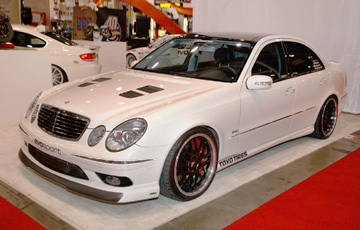
Annual aftermarket sales are approaching $40 billion, says the Specialty Equipment Market Assn.
In these tough economic times, how can U.S. automotive dealerships obtain a larger piece of the pie?
John Koerner, executive vice president of Healey Brothers Automotive Group in New York, says customers are introduced to his dealership’s delivery coordinator, who is responsible for all accessory sales, at the time of sale and before the customer is turned over to the finance and insurance manager.
“We want that customer to purchase (accessories) before they get into F & I, so that we can work it all into the payment,” says Koerner, during a recent webinar held by DealerTrack, an automotive software and data firm.
“Once a vehicle is sold, our salesperson provides the accessories manager with the purchase order,” he says.
Healey Brothers uses a customer’s credit or trade-in equity to determine how much money he can spend on accessories when purchasing a vehicle.
“We also do a quick check on trade-in vehicles to see what type of accessories might be on that trade,” Koerner says.

A DealerTrack configurator shows a computer image of what a new vehicle looks like with exterior accessories a customer might consider purchasing.
Koerner says Healey Brothers got into the accessories business nearly four years ago.
SEMA says about 75% of new-car buyers plan to upgrade the wheels of their new vehicle or buy personalized add-ons.
To excel in accessory sales, dealerships must clearly define who is selling the accessories and where in the process they are being sold, says Dinos Constantine, DealerTrack’s marketing director and webinar host.
“Sometimes the salesperson doesn’t know what’s available, and if they do know, the parts and service department hasn’t communicated pricing,” he says.
An accessories operation is not a no-brainer, Constantine warns. “Expanding your accessories’ portfolio creates additional headaches, such as increased inventory and figuring out what accessories match up to which vehicles.”
With an increasing number of products, technicians also must be trained on installation.
“Dealers usually have a labor-installation rate that in many cases isn’t competitive with other providers,” Constantine says.
He says accessories’ profits for dealers are significant, with many adding $100,000-plus to their bottom lines each year. But, dealers have to look at opportunities to sell accessories at every touch point they have with the consumer, including introducing the accessories during the sales process.
“Dealers are facing a serious crunch from falling new- and used-vehicle profit margins, declining warranty work, and increased pressure on F&I income sources,” Constantine says.
“In this environment, accessories represent a much-needed source of profits. Dealers are in a good position to capitalize on this market. Many customers accessorize their vehicle at the time of purchase or soon afterwards.”
Franchised auto dealers are in a powerful position of being able to offer factory-certified OEM options that other providers cannot, Constantine says.
“Dealers have a professional staff of installers, they know the customer’s vehicle and in many cases have the ability to finance the purchase,” he says. “These are all significant advantages dealers have over jobbers and other third-parties.”
Dealers with established accessory departments report 30% of their customers buy accessories at the time of purchase, Constantine says. That figure is higher at stores selling trucks and SUVs.
“The average customer spends about $1,200 on accessories,” he says. “This breaks down to about $800 worth of parts and $400 of install revenue. Gross margins are running in the 35%-40% range.
If it’s such a great opportunity, why are dealers struggling to sell accessories? “One of the stumbling blocks is lack of a process at the dealership,” Constantine says.
Healey Brothers has found success by displaying a few vehicles loaded with accessories. Good vehicles to dress up are Ford Mustangs and F-Series trucks, Koerner says.
Healey has added $30,000-40,000 in upgrades to a few high-end Mustangs, including superchargers, whole body fascia kits, brembo brakes, leather interiors and new gauges.
“We’ve been very successful, but we usually only build one or two at a time,” Koerner says. “Our average gross on those vehicles is anywhere between $7,000 and $16,000. But we do not add accessories to a vehicle in inventory at cost, we add them to the vehicle at retail.
“The desk, or the salesperson, isn’t going to negotiate that car down to the same gross you would have had without the accessories,” he adds.
For instance, if the retail was $2,000 for an accessory, the cost of the vehicle is increased $2,000. “It goes into the profit of that vehicle.”




